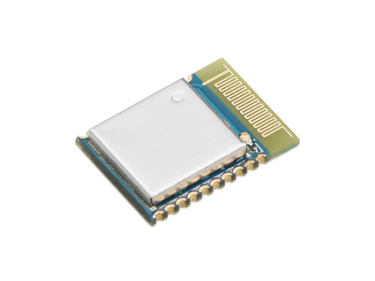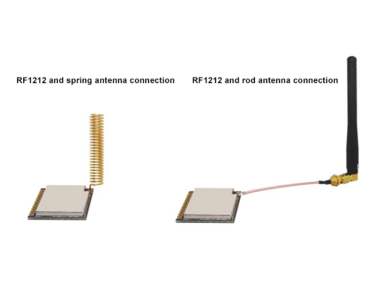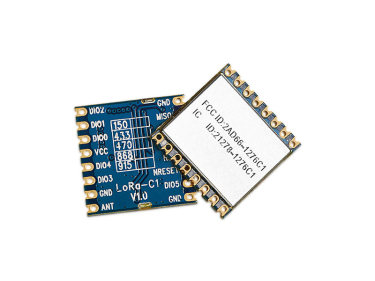Optimization Methods for Network Encryption Communication in Microcontroller Systems
Network encryption communication is a key measure for ensuring data security. By encrypting data, it effectively prevents it from being intercepted or tampered with during transmission. In microcontroller systems, given the limitations of hardware resources (such as computational power and memory capacity), achieving encrypted communication requires a balance between security and system performance.
Challenges of Network Encryption Communication in Microcontroller System
Limited Computational Resources
The CPU performance of microcontrollers is relatively low, making it difficult to efficiently run complex encryption algorithms, especially when processing large amounts of data.
Limited Memory and Storage Space
Many microcontrollers only have tens of kilobytes of RAM and limited storage space, insufficient for storing large encryption keys or temporary encryption data.
High Real-Time Requirements
Embedded systems often need to respond in real-time, so the encryption and decryption processes cannot introduce noticeable latency.
Power Sensitivity
In IoT devices, power consumption is a critical design consideration. Complex encryption algorithms typically increase power consumption, which is especially detrimental to battery-powered devices.
Optimization Methods
To address these challenges, microcontroller systems can be optimized in both hardware and software.
1. Hardware Encryption
To improve the performance of encrypted communication, microcontrollers with hardware encryption acceleration can be used. For example, some ARM Cortex-M series microcontrollers integrate hardware encryption engines that can directly accelerate algorithms like AES and SHA, significantly reducing CPU load. Using dedicated hardware modules also reduces the power consumption of encryption operations.
2. Memory Protection Unit (MPU)
The MPU is a hardware module embedded in microprocessors or microcontrollers, used to manage and protect system memory access. By dividing memory into regions and setting different access permissions, it prevents errors or malicious code in programs from accessing restricted memory, enhancing system security and stability.
3. Software Code Protection: PCROP Read-Write Protection
In industrial control systems, devices often operate in unattended environments, where attackers may attempt to inject malicious code or extract proprietary algorithms by accessing device firmware. PCROP technology effectively prevents such attacks, ensuring firmware integrity and exclusivity.
4. Selecting Lightweight Encryption Algorithms
On resource-constrained microcontroller, lightweight encryption algorithms can be chosen, such as:
Tiny AES: A lightweight AES implementation optimized for embedded systems.
Speck/Simon: Lightweight encryption algorithms suitable for IoT devices, with low computational overhead and good security.
ChaCha20: A symmetric encryption algorithm that is more efficient and easier to implement than traditional AES.
5. Optimizing Key Management
As the core of encrypted communication, efficient and secure key management is essential. Optimization measures include:
Key Distribution and Updates: Use secure key exchange protocols (such as Diffie-Hellman or ECDH) for key negotiation.
Key Storage: Store keys in secure storage areas (such as EEPROM or OTP) on the microcontroller to prevent key leakage.
Dynamic Key Updates: Regularly replace encryption keys to reduce security risks if a key is compromised.
6. Using Efficient Communication Protocols
Choose efficient security protocols suitable for microcontrollers, such as:
TLS/DTLS: Lightweight secure transport protocols widely used in embedded devices.
MQTT over TLS: A secure messaging protocol suitable for IoT devices, with low bandwidth and power requirements.
7. Reducing Data Transmission Volume
Reducing data transmission volume can significantly decrease encryption and decryption workload. Optimization methods include:
Data Compression: Compress data before encryption to reduce the volume of transmitted data.
Differential Data Updates: Transmit only the data that has changed, reducing encryption overhead.
Challenges of Network Encryption Communication in Microcontroller System
Limited Computational Resources
The CPU performance of microcontrollers is relatively low, making it difficult to efficiently run complex encryption algorithms, especially when processing large amounts of data.
Limited Memory and Storage Space
Many microcontrollers only have tens of kilobytes of RAM and limited storage space, insufficient for storing large encryption keys or temporary encryption data.
High Real-Time Requirements
Embedded systems often need to respond in real-time, so the encryption and decryption processes cannot introduce noticeable latency.
Power Sensitivity
In IoT devices, power consumption is a critical design consideration. Complex encryption algorithms typically increase power consumption, which is especially detrimental to battery-powered devices.
Optimization Methods
To address these challenges, microcontroller systems can be optimized in both hardware and software.
1. Hardware Encryption
To improve the performance of encrypted communication, microcontrollers with hardware encryption acceleration can be used. For example, some ARM Cortex-M series microcontrollers integrate hardware encryption engines that can directly accelerate algorithms like AES and SHA, significantly reducing CPU load. Using dedicated hardware modules also reduces the power consumption of encryption operations.
2. Memory Protection Unit (MPU)
The MPU is a hardware module embedded in microprocessors or microcontrollers, used to manage and protect system memory access. By dividing memory into regions and setting different access permissions, it prevents errors or malicious code in programs from accessing restricted memory, enhancing system security and stability.
3. Software Code Protection: PCROP Read-Write Protection
In industrial control systems, devices often operate in unattended environments, where attackers may attempt to inject malicious code or extract proprietary algorithms by accessing device firmware. PCROP technology effectively prevents such attacks, ensuring firmware integrity and exclusivity.
4. Selecting Lightweight Encryption Algorithms
On resource-constrained microcontroller, lightweight encryption algorithms can be chosen, such as:
Tiny AES: A lightweight AES implementation optimized for embedded systems.
Speck/Simon: Lightweight encryption algorithms suitable for IoT devices, with low computational overhead and good security.
ChaCha20: A symmetric encryption algorithm that is more efficient and easier to implement than traditional AES.
5. Optimizing Key Management
As the core of encrypted communication, efficient and secure key management is essential. Optimization measures include:
Key Distribution and Updates: Use secure key exchange protocols (such as Diffie-Hellman or ECDH) for key negotiation.
Key Storage: Store keys in secure storage areas (such as EEPROM or OTP) on the microcontroller to prevent key leakage.
Dynamic Key Updates: Regularly replace encryption keys to reduce security risks if a key is compromised.
6. Using Efficient Communication Protocols
Choose efficient security protocols suitable for microcontrollers, such as:
TLS/DTLS: Lightweight secure transport protocols widely used in embedded devices.
MQTT over TLS: A secure messaging protocol suitable for IoT devices, with low bandwidth and power requirements.
7. Reducing Data Transmission Volume
Reducing data transmission volume can significantly decrease encryption and decryption workload. Optimization methods include:
Data Compression: Compress data before encryption to reduce the volume of transmitted data.
Differential Data Updates: Transmit only the data that has changed, reducing encryption overhead.
Case Study
Using G-NiceRF’s LoRa-STM32WLE5 SoC module as an example, this system needs to transmit real-time data to the cloud in wireless meter-reading applications. To ensure data security, developers chose the following encryption measures for this module:
1. Hardware AES Acceleration Support
As an IoT device, wireless data transmission inevitably faces various attack risks. The LoRa-STM32WLE5 module integrates 256-bit AES hardware encryption technology to enhance data transmission security. AES (Advanced Encryption Standard) is a widely used symmetric encryption algorithm, and AES-256 is considered highly resistant to cracking, sufficient for encryption needs over the coming decades.
2. PCROP Read-Write Protection: The Key to Firmware Security
PCROP technology can lock specific storage areas on the chip, making them unreadable or unmodifiable. Even if hackers try to extract data from the chip through physical means, they cannot bypass PCROP protection, ensuring the security of device firmware and core algorithms. This is significant for protecting intellectual property and preventing firmware tampering.
3. Memory Protection Unit (MPU): Preventing Unauthorized Access
The STM32WLE5 SoC includes an embedded MPU that provides precise memory management. The MPU allows the system to restrict memory access for each task, preventing unauthorized access and memory conflicts between tasks. This feature is particularly important for multitasking operating systems, as it prevents malicious tasks from affecting critical system processes, ensuring normal device operation.
In conclusion, microcontroller systems face many challenges in network encryption communication. However, through hardware acceleration, optimized encryption algorithms, improved key management, efficient protocols, and optimized software implementations, efficient and secure encrypted communication can be achieved within limited resources. This not only enhances the performance of embedded devices but also provides an important safeguard for data security in the IoT era. In the future, with further advancements in hardware and algorithm technology, microcontrollers will perform even better in network encryption communication.
Challenges of Network Encryption Communication in Microcontroller System
Limited Computational Resources
The CPU performance of microcontrollers is relatively low, making it difficult to efficiently run complex encryption algorithms, especially when processing large amounts of data.
Limited Memory and Storage Space
Many microcontrollers only have tens of kilobytes of RAM and limited storage space, insufficient for storing large encryption keys or temporary encryption data.
High Real-Time Requirements
Embedded systems often need to respond in real-time, so the encryption and decryption processes cannot introduce noticeable latency.
Power Sensitivity
In IoT devices, power consumption is a critical design consideration. Complex encryption algorithms typically increase power consumption, which is especially detrimental to battery-powered devices.
Optimization Methods
To address these challenges, microcontroller systems can be optimized in both hardware and software.
1. Hardware Encryption
To improve the performance of encrypted communication, microcontrollers with hardware encryption acceleration can be used. For example, some ARM Cortex-M series microcontrollers integrate hardware encryption engines that can directly accelerate algorithms like AES and SHA, significantly reducing CPU load. Using dedicated hardware modules also reduces the power consumption of encryption operations.
2. Memory Protection Unit (MPU)
The MPU is a hardware module embedded in microprocessors or microcontrollers, used to manage and protect system memory access. By dividing memory into regions and setting different access permissions, it prevents errors or malicious code in programs from accessing restricted memory, enhancing system security and stability.
3. Software Code Protection: PCROP Read-Write Protection
In industrial control systems, devices often operate in unattended environments, where attackers may attempt to inject malicious code or extract proprietary algorithms by accessing device firmware. PCROP technology effectively prevents such attacks, ensuring firmware integrity and exclusivity.
4. Selecting Lightweight Encryption Algorithms
On resource-constrained microcontroller, lightweight encryption algorithms can be chosen, such as:
Tiny AES: A lightweight AES implementation optimized for embedded systems.
Speck/Simon: Lightweight encryption algorithms suitable for IoT devices, with low computational overhead and good security.
ChaCha20: A symmetric encryption algorithm that is more efficient and easier to implement than traditional AES.
5. Optimizing Key Management
As the core of encrypted communication, efficient and secure key management is essential. Optimization measures include:
Key Distribution and Updates: Use secure key exchange protocols (such as Diffie-Hellman or ECDH) for key negotiation.
Key Storage: Store keys in secure storage areas (such as EEPROM or OTP) on the microcontroller to prevent key leakage.
Dynamic Key Updates: Regularly replace encryption keys to reduce security risks if a key is compromised.
6. Using Efficient Communication Protocols
Choose efficient security protocols suitable for microcontrollers, such as:
TLS/DTLS: Lightweight secure transport protocols widely used in embedded devices.
MQTT over TLS: A secure messaging protocol suitable for IoT devices, with low bandwidth and power requirements.
7. Reducing Data Transmission Volume
Reducing data transmission volume can significantly decrease encryption and decryption workload. Optimization methods include:
Data Compression: Compress data before encryption to reduce the volume of transmitted data.
Differential Data Updates: Transmit only the data that has changed, reducing encryption overhead.
Case Study
Using G-NiceRF’s LoRa-STM32WLE5 SoC module as an example, this system needs to transmit real-time data to the cloud in wireless meter-reading applications. To ensure data security, developers chose the following encryption measures for this module:
1. Hardware AES Acceleration Support
As an IoT device, wireless data transmission inevitably faces various attack risks. The LoRa-STM32WLE5 module integrates 256-bit AES hardware encryption technology to enhance data transmission security. AES (Advanced Encryption Standard) is a widely used symmetric encryption algorithm, and AES-256 is considered highly resistant to cracking, sufficient for encryption needs over the coming decades.
2. PCROP Read-Write Protection: The Key to Firmware Security
PCROP technology can lock specific storage areas on the chip, making them unreadable or unmodifiable. Even if hackers try to extract data from the chip through physical means, they cannot bypass PCROP protection, ensuring the security of device firmware and core algorithms. This is significant for protecting intellectual property and preventing firmware tampering.
3. Memory Protection Unit (MPU): Preventing Unauthorized Access
The STM32WLE5 SoC includes an embedded MPU that provides precise memory management. The MPU allows the system to restrict memory access for each task, preventing unauthorized access and memory conflicts between tasks. This feature is particularly important for multitasking operating systems, as it prevents malicious tasks from affecting critical system processes, ensuring normal device operation.
In conclusion, microcontroller systems face many challenges in network encryption communication. However, through hardware acceleration, optimized encryption algorithms, improved key management, efficient protocols, and optimized software implementations, efficient and secure encrypted communication can be achieved within limited resources. This not only enhances the performance of embedded devices but also provides an important safeguard for data security in the IoT era. In the future, with further advancements in hardware and algorithm technology, microcontrollers will perform even better in network encryption communication.
Case Study
Using G-NiceRF’s LoRa-STM32WLE5 SoC module as an example, this system needs to transmit real-time data to the cloud in wireless meter-reading applications. To ensure data security, developers chose the following encryption measures for this module:
1. Hardware AES Acceleration Support
As an IoT device, wireless data transmission inevitably faces various attack risks. The LoRa-STM32WLE5 module integrates 256-bit AES hardware encryption technology to enhance data transmission security. AES (Advanced Encryption Standard) is a widely used symmetric encryption algorithm, and AES-256 is considered highly resistant to cracking, sufficient for encryption needs over the coming decades.
2. PCROP Read-Write Protection: The Key to Firmware Security
PCROP technology can lock specific storage areas on the chip, making them unreadable or unmodifiable. Even if hackers try to extract data from the chip through physical means, they cannot bypass PCROP protection, ensuring the security of device firmware and core algorithms. This is significant for protecting intellectual property and preventing firmware tampering.
3. Memory Protection Unit (MPU): Preventing Unauthorized Access
The STM32WLE5 SoC includes an embedded MPU that provides precise memory management. The MPU allows the system to restrict memory access for each task, preventing unauthorized access and memory conflicts between tasks. This feature is particularly important for multitasking operating systems, as it prevents malicious tasks from affecting critical system processes, ensuring normal device operation.
In conclusion, microcontroller systems face many challenges in network encryption communication. However, through hardware acceleration, optimized encryption algorithms, improved key management, efficient protocols, and optimized software implementations, efficient and secure encrypted communication can be achieved within limited resources. This not only enhances the performance of embedded devices but also provides an important safeguard for data security in the IoT era. In the future, with further advancements in hardware and algorithm technology, microcontrollers will perform even better in network encryption communication.
 +86-755-23080616
+86-755-23080616
 sales@nicerf.com
sales@nicerf.com
Website: https://www.nicerf.com/
Address: 309-314, 3/F, Bldg A, Hongdu business building, Zone 43, Baoan Dist, Shenzhen, China


 English
English









